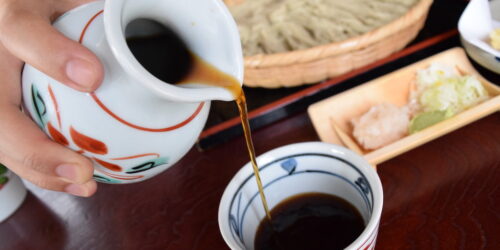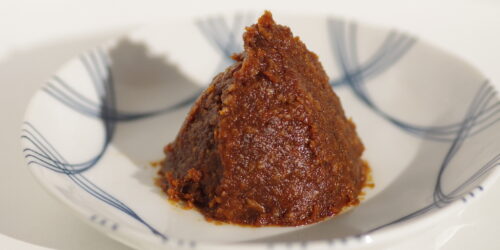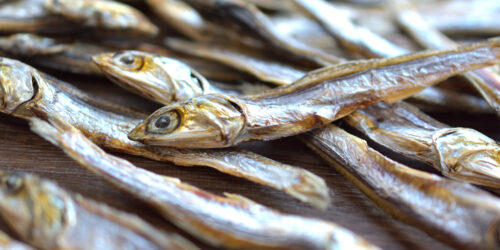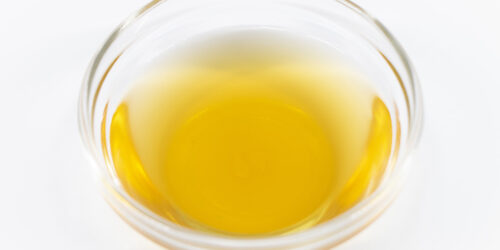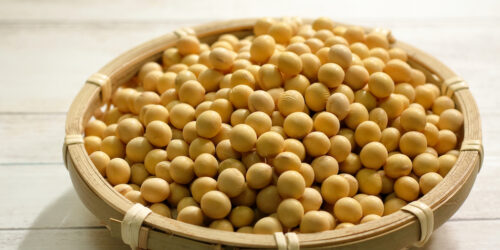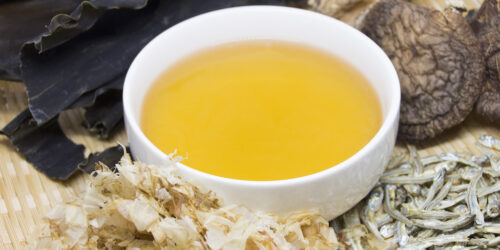What Is Kombu and How Is It Used?
What Is Kombu (Dried Kelp)?
Kombu is a common name for several seaweeds belonging to Laminariaceae.
It can’t be defined exactly, but the edible type of seaweeds with long and thin leaves are tend to be called “kombu”. And kombu grows with spores.
Main production areas of kombu in Japan is Hokkaido, and there are several brands which are very famous in Japan: Rishiri kelp (利尻昆布), Hidaka kelp (日高昆布), etc.
What is Kombu Made of?
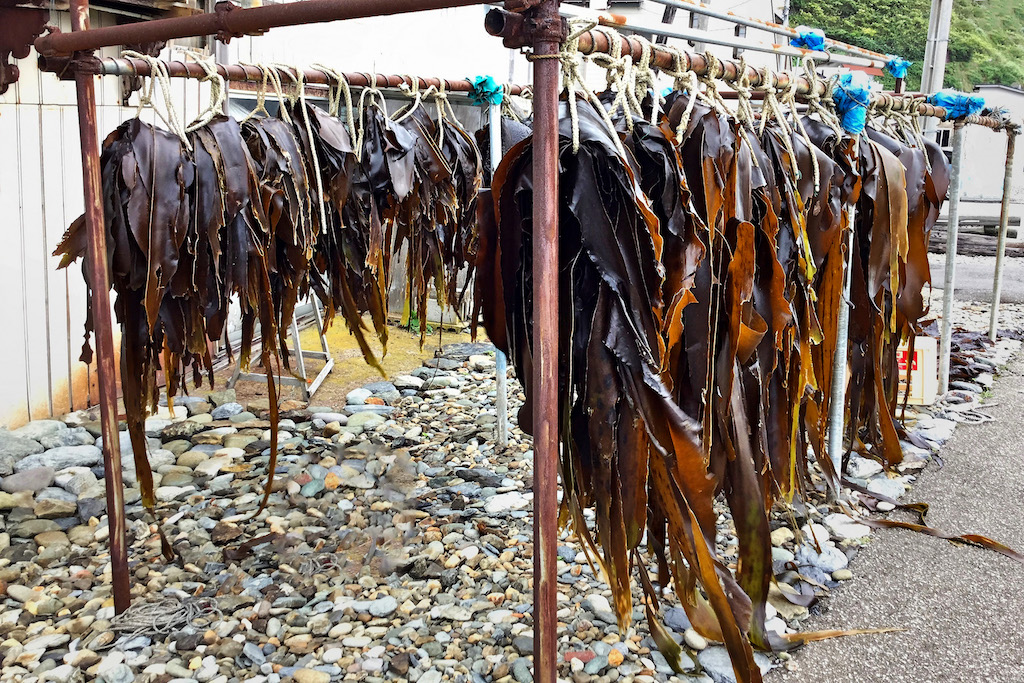 ▲Dried Kombu in Hokkaido
▲Dried Kombu in Hokkaido
Harvested kombu is washed very well with seawater. They are carried to a dry ground with pebbles, lined up, and dried. They are dried for about half a day sometimes turning inside out.
Even after drying, kombu is aged for 1-3 years before shipping depending on the brand. The aging period for high‐quality kombu could be 5-10 years.
What Does Kombu Taste Like?
Kombu Dashi
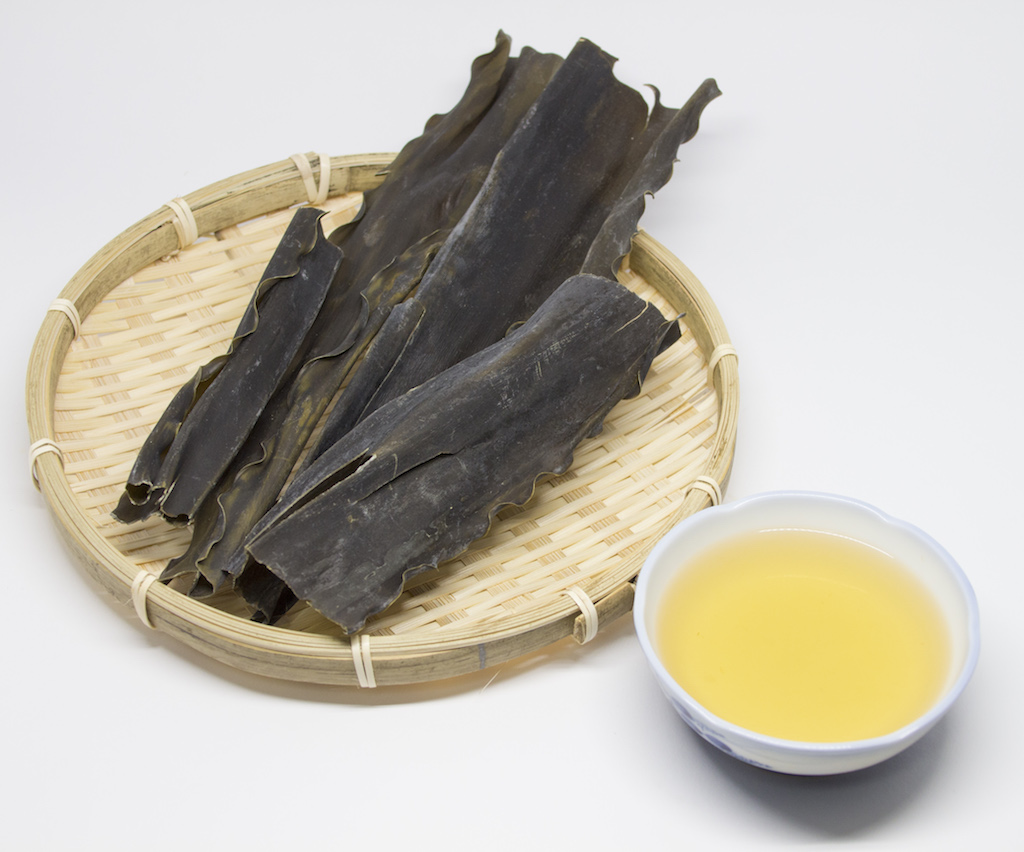
The stock made from kombu has excellent flavor and great umami (delicious taste). Kombu dashi doesn’t have the smell of the sea.
Kombu as Ingredients

Kombu as cooking ingredient is thick and very chewy. You can feel unique subtle smell of seaweed.
It’s usually simmered well in cooking so that it can absorb the taste of the sauce very well.
Is Kombu the Same As Seaweed?
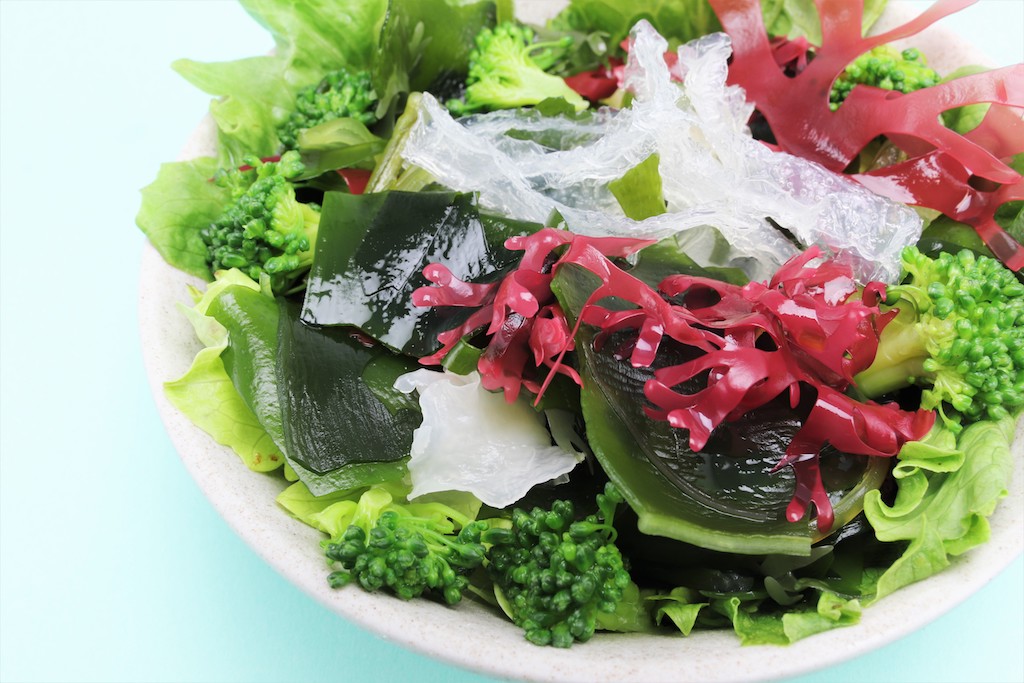 ▲Salad with Various Types of Seaweed
▲Salad with Various Types of Seaweed
Kombu is a type of seaweed. The single word “seaweed” covers a lot of types of Japanese foods.
For example, the followings are all categorized in “seaweed” (海藻 kaisou in Japanese):
・Aonori (Green Laver)
・Hijiki
・Kombu (Kelp)
・Mozuku
・Nori (Laver)
・Wakame
So, you can say “Kombu is Seaweed” but please consider it as a type of seaweed.
Is Nori Same As Kombu?
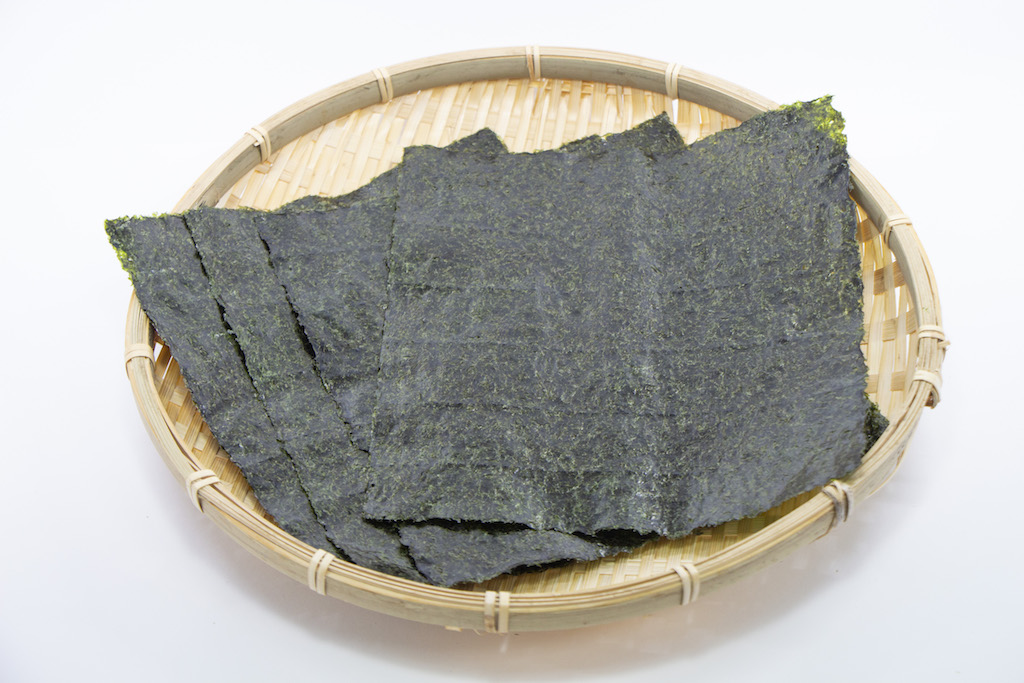
Nori and kombu are completely different food.
Nori is a general term for algae that grow on rocks in water, and it could be expressed as “seaweed” too.
Harvested nori is washed very well, finely chopped, and dried well while arranging it into a square shape.
Nori is extremely thin, and it’s crispy for a moment, but melt quickly when you put it in your mouth.
So, Nori and kombu are both categorized in “seaweed”, but those are totally different.
Does Kombcha Drink Contain Kombu (Kelp)?
No, kombcha drink is completely different product from kombu (kelp).
Kombcha refers to tea mushroom, “紅茶キノコ” in Japanese.
Kombcha is fermented beverage, and has become very popular as a health beverage all over the world.
It’s made by mixing the black tea or green tea, sugar, and SCOBY*
*SCOBY is “symbiotic culture of bacteria and yeast”
How Is Kombu Used?
There are many kombu as luxury items, and those are often used for making dashi and ingredients in cooking at luxury restaurants.
Kombu is often used for ordinary home meals too. Some people buy the dried kombu at grocery stores to make dashi from scratch at home, and others just buy the dashi granules made of kombu.
Other than kombu dashi, it’s also used as ingredients in various types of dishes, for example, tsukudani and oden.
Here, let me introduce how is kombu used in four parts.
1. Kombu as Dashi
2. Kombu as Ingredients
3. Kombu in Local Cuisines
4. Processed Products Made from Kombu
1. Kombu as Dashi
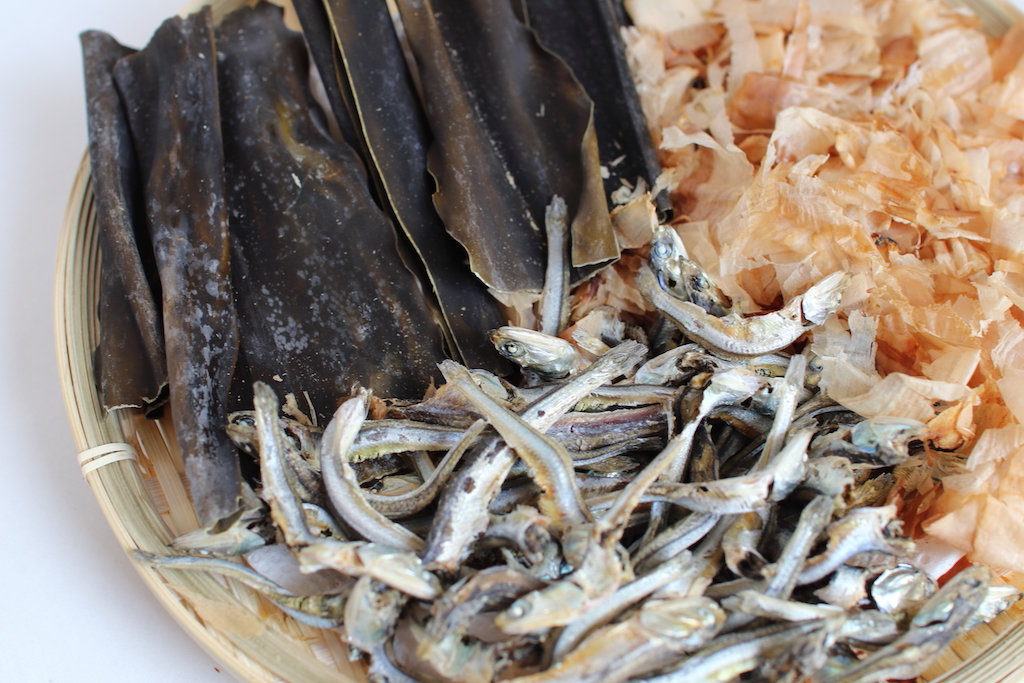
Dashi contains a lot of umami components which are amino acid, nucleic acid, and nutrients. And it gives dishes great scent too.
This dashi is essential ingredient for many of Japanese foods, and the typical raw materials for dashi are katsuobushi (dried bonito shavings), kombu (kelp), and niboshi (dried small sardines).
Especially dried bonito shavings and kombu are very common materials that used extensively from high-end restaurants to ordinary households.
There are 2 ways to make kombu dashi:
・Soak kombu in water, and leave it for about 3 hours to 1 night.
・Heat kombu with water until just before boiling on low-middle heat.
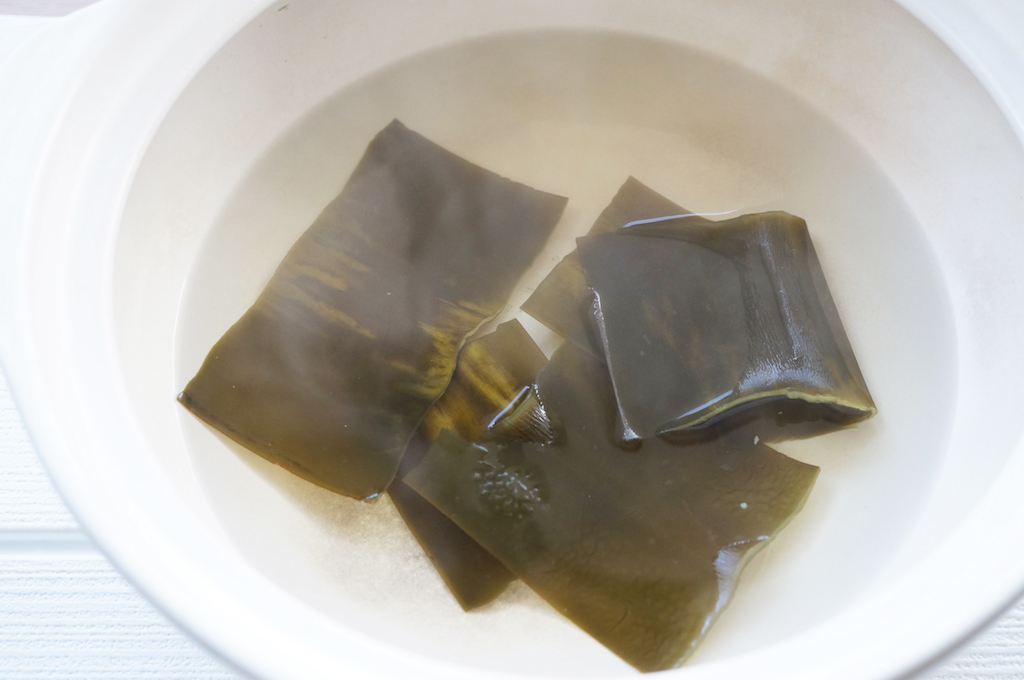
The followings are popular Japanese foods using kombu dashi.
・Miso soup
・Udon noodles
・Boiled tofu (You eat this tofu with ponzu.)
Other than those dishes, kombu dashi can be used in all kinds of dishes, regardless of whether the taste of the dish is sweet or salty.
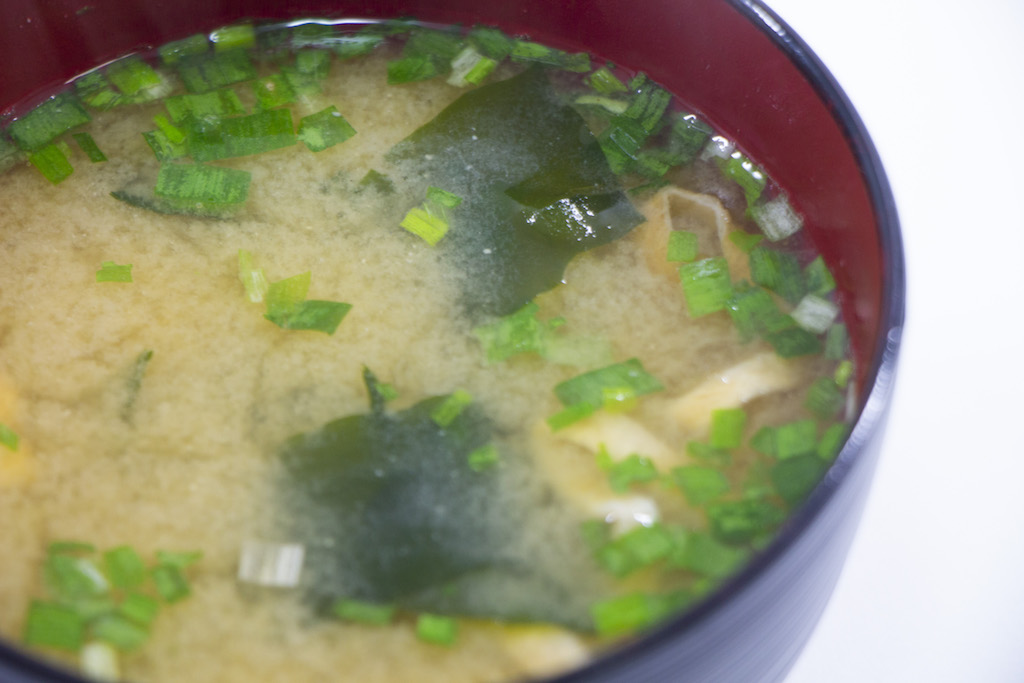 ▲Miso Soup
▲Miso Soup
 ▲Udon Noodles
▲Udon Noodles
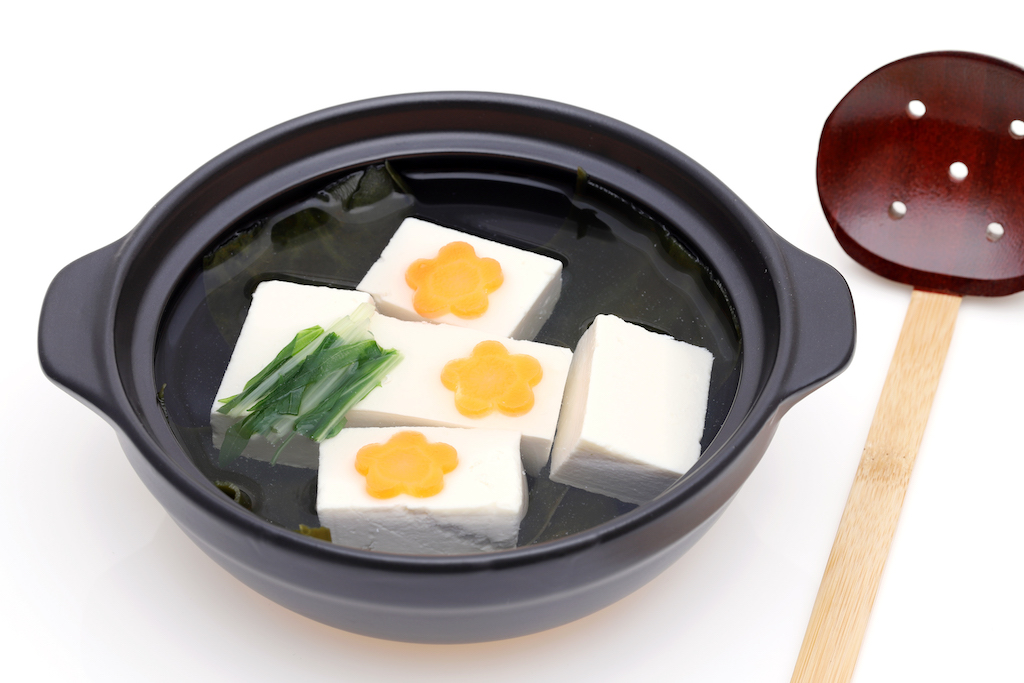 ▲Boiled Tofu
▲Boiled Tofu
2. Kombu as Ingredients
Tsukudani (Preservable Food Boiled Down in Soy Sauce)
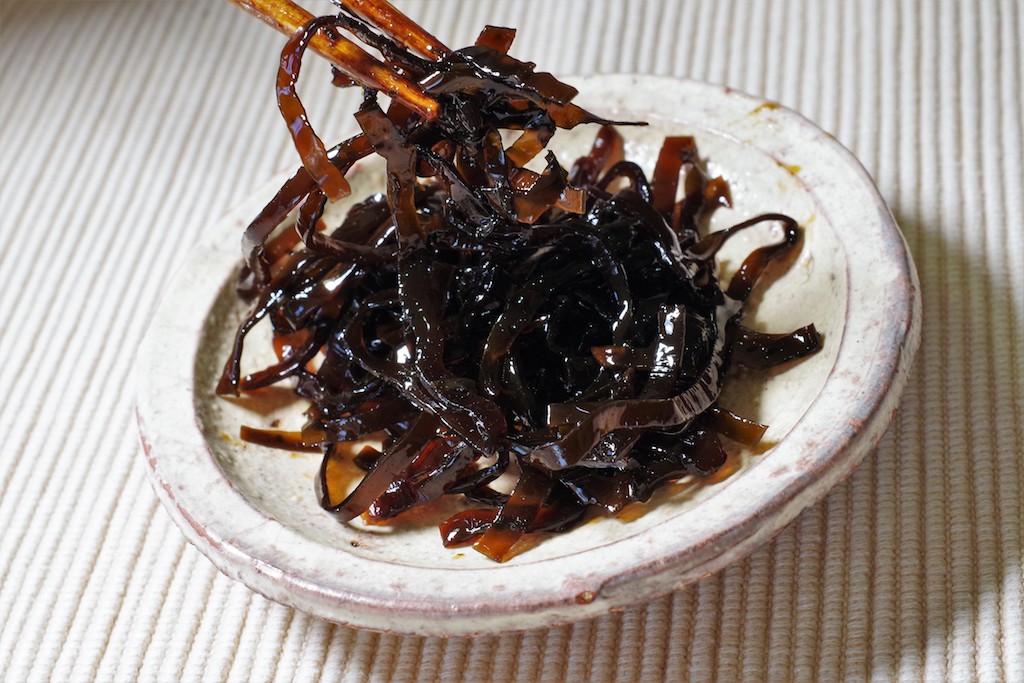
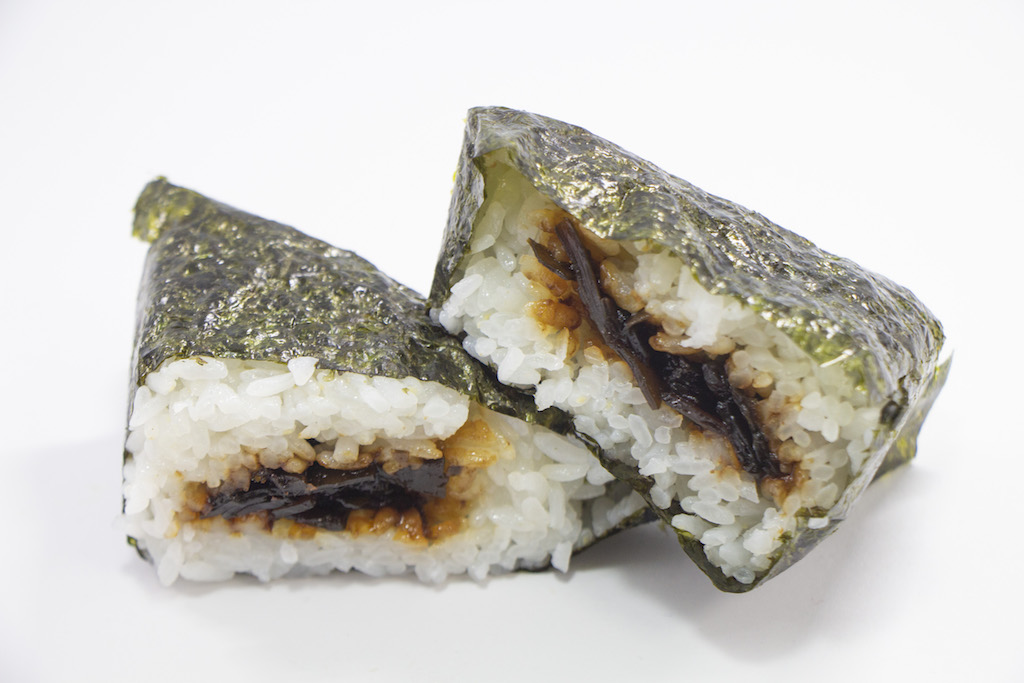
Tsukudani is Japanese traditional preservable food which made by boiling small fishes, seaweed, meat, or shellfish in soy sauce based sweet sauce. Kombu tsukudani is one of the most popular tsukudani in Japan, and it often uses thinly shredded kombu.
Sweet-salty kombu tsukudani is perfect match with white rice. Onigiri with kombu inside is very common, and you can find it at convenience stores all over Japan.
Oden (Fishcake and Vegetable Stew)
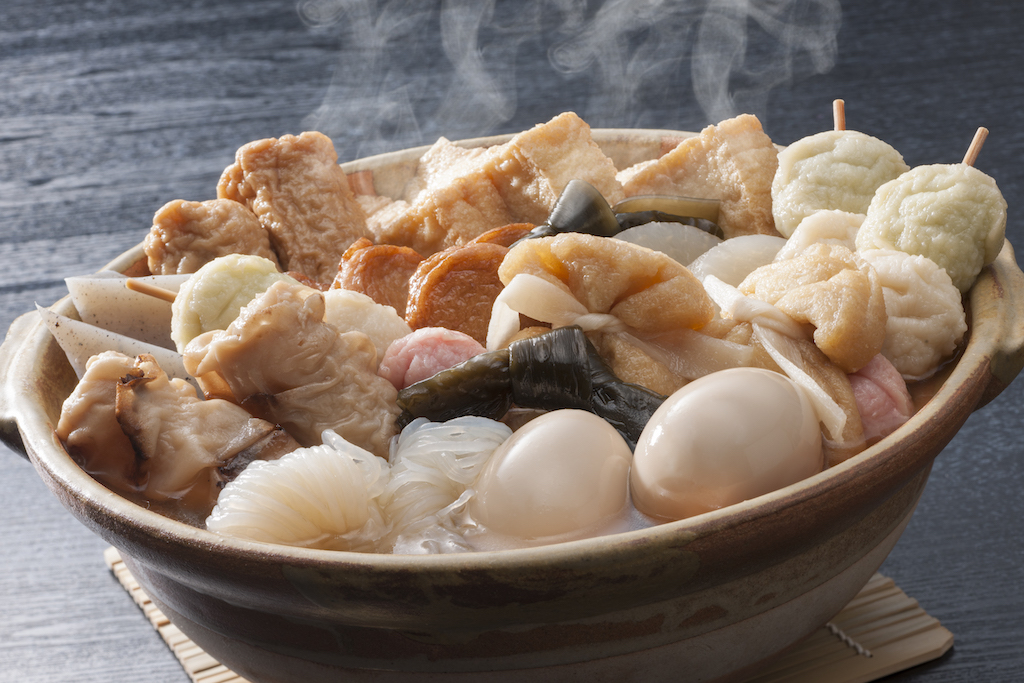
Although the main ingredients in oden are usually various kinds of fishcakes, kombu knot is also very common ingredient in oden. Kombu knot doesn’t work as just ingredient but also works as delicious stock in oden. Kombu in oden has thick and chewy texture, and so delicious since it absorbs the taste of stew well.
Snack Kombu
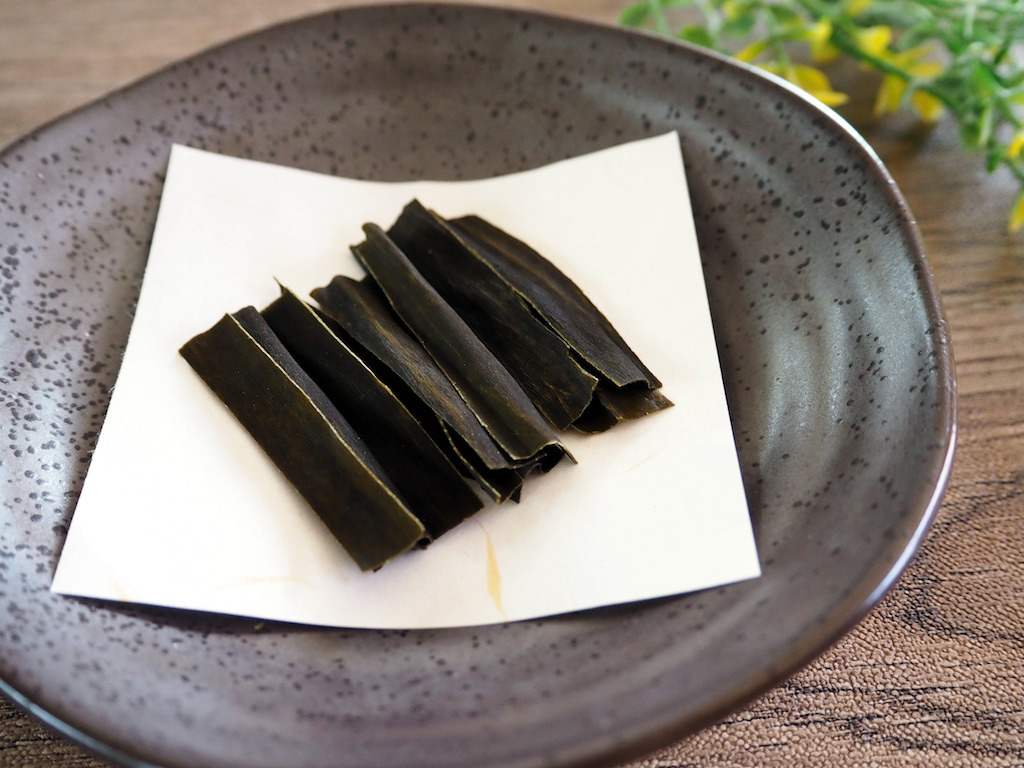
Bite-sized and a little salty kombu is also popular snack in Japan. You can get it at grocery stores and convenience stores. Unlike the kombu in tsukudani and oden, this snack kombu has more dry texture. It’s thin but very chewy.
Kombu Tea

This is not Kombcha which is fermented beverage.
Kombu tea is beverage that is made by pouring hot water into dried, finely chopped or powdered kelp. It’s often mixed with a little bit of salt, plum, or refined green tea.
It’s supposed to be used for making tea, but some people use this kombu powder for cooking. It can be good substitute for dashi granules, and give the dishes umami.
3. Kombu in Local Cuisines
There are a lot of attractive local cuisines using kombu. The following dishes originated in each region, and they are also popular in other parts of Japan nowadays.
Matsumae-zuke in Hokkaido
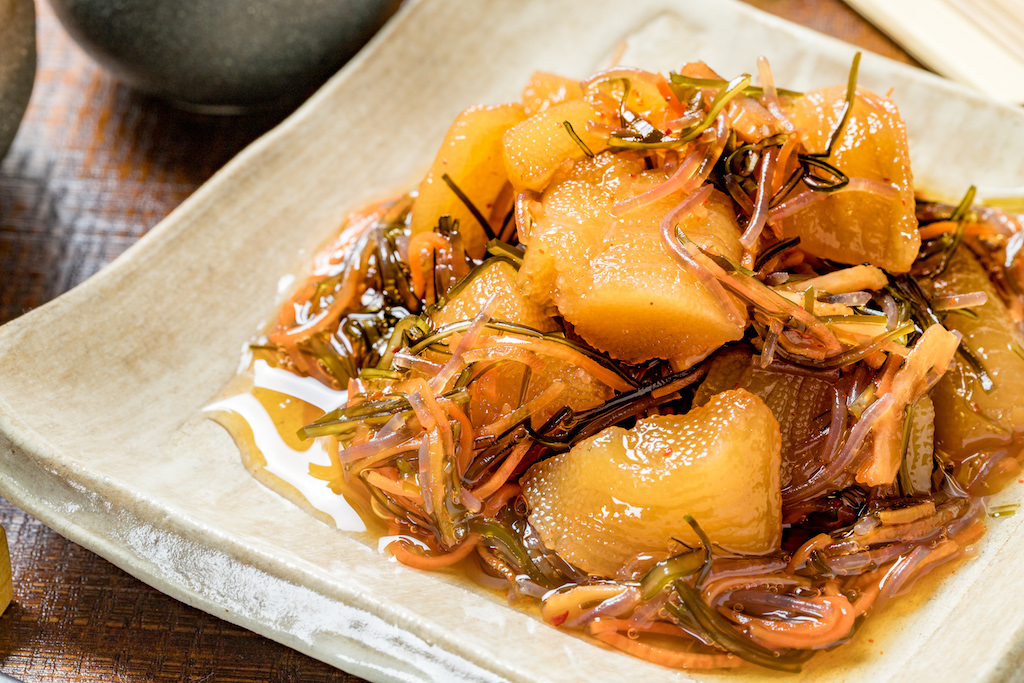
This is local cuisine of Hokkaido prefecture that is made by soaking herring roe, thinly shredded dried squid, and kombu in the sauce made of soy sauce, sake, mirin, sugar, etc.
It has been popular as a winter preserved food in Hokkaido, and it’s often served as New Year dish.
Kombu-maki Herring in Ishikawa
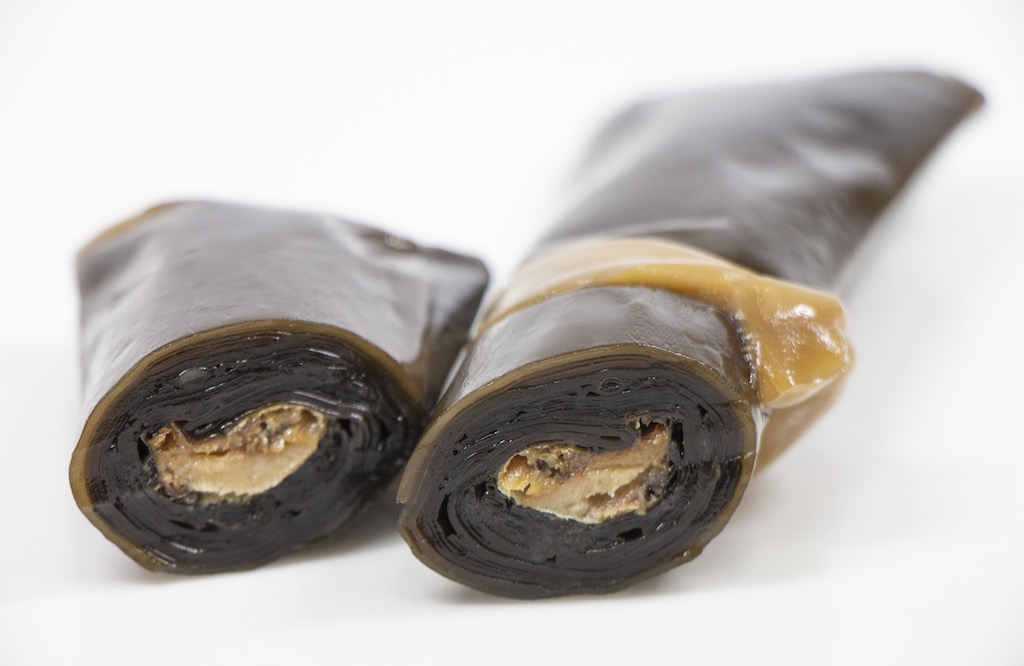
This is local cuisine of Ishikawa prefecture, and “kombu-maki” means a rolled kombu with something in it. Cooked soft herring (ニシン) is wrapped in kombu for this cuisine, and simmered in soy sauce based sauce.
Some people eat it on a daily basis, and others put it in Osechi which is the traditional meal only prepared for New Year.
Kobu-jime in Toyama

This is local cuisine of Toyama prefecture, and “kobu-jime” means sandwiching ingredients with kombu.
You can sandwich any type of food, and should let it rest overnight. In that way, the moisture of food will be absorbed by kombu, and the umami (glutamic acid) in kombu will be transferred to the ingredient. Normally the ingredient is raw fish, and you can enjoy it as sashimi with great umami of the kombu.
Battera (Mackerel Sushi) in Osaka
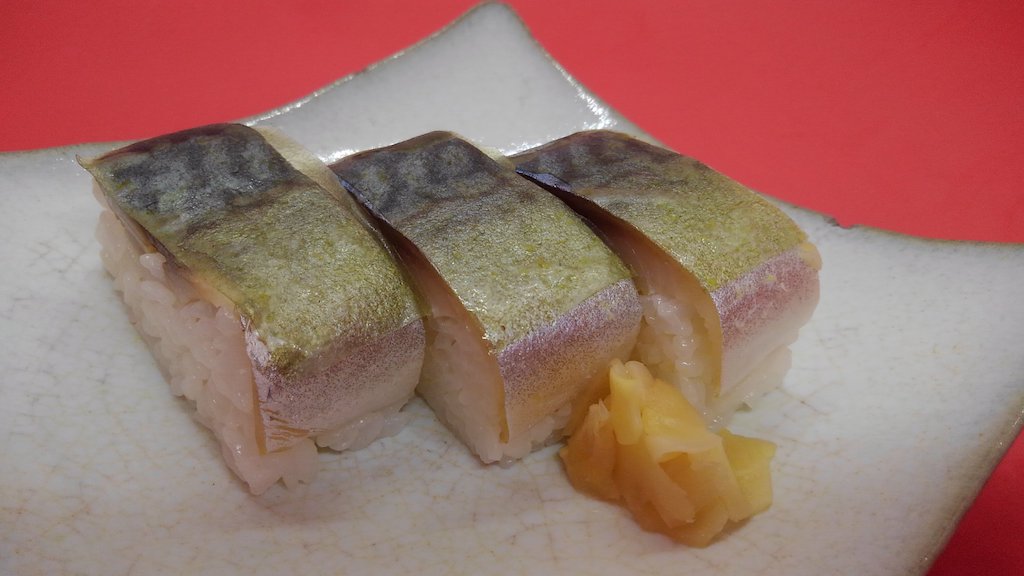
This is local cuisine of Osaka prefecture. Battera is Portuguese term for “boat” (It’s said that the original sushi used to be made with the fish looks like a boat).
Battera is pressed sushi made by putting vinegar rice, mackerel, and kombu in a wooden frame and pressing them. Due to this process, the shape of sushi is square.
Mackerel and boiled kombu are soaked in vinegar in advance, so it improves storage stability and suppresses fishy odors.
Kombu used for this cuisine is called Shiroita kombu 白板昆布, and very unique: the appearance is whitish, and it has been processed into a thin shape for the exclusive use of Battera. The kombu is normally removed before eating, but you can reuse the kombu.
4. Processed Products Made from Kombu
Shio Kombu (Salted Kelp)
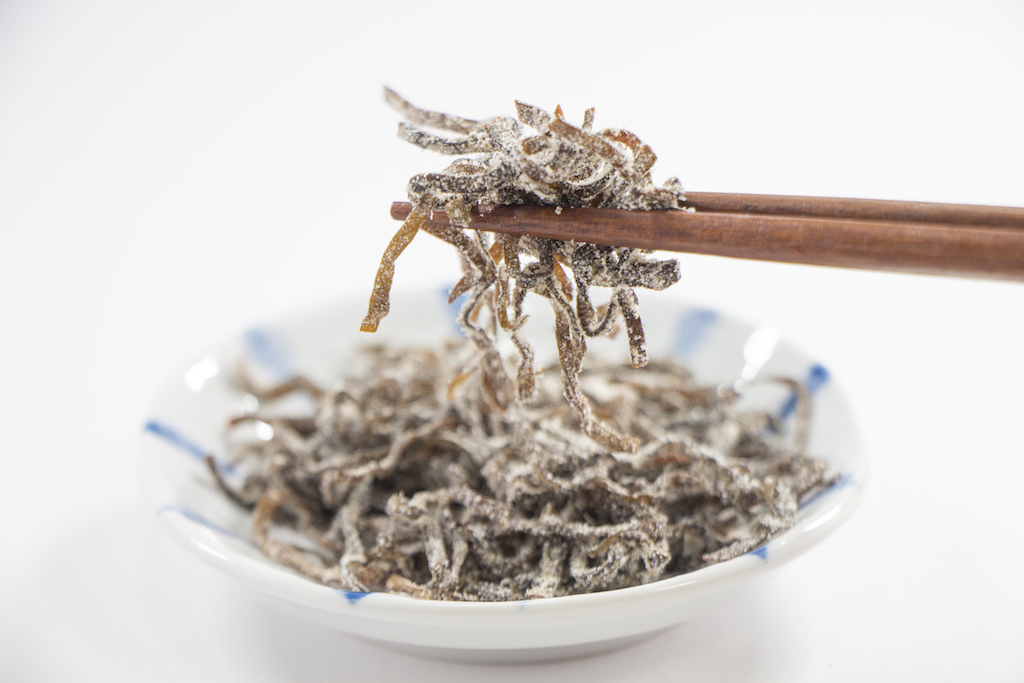
Shio kombu is made by boiling shredded dried kombu, and sprinkling salt on them. Some people may make it from scratch at home. But shio kombu packed in a bag is available on the market, and this item is commonly used at each home.
Shio kombu is extremely useful item, you can use it as topping, seasoning, and ingredients for all kinds of dishes. For example, you can mix it with rice when you make rice ball or just put it on a bowl of rice, use it as ingredient and seasoning for salad, and use it for stir-frying dishes.
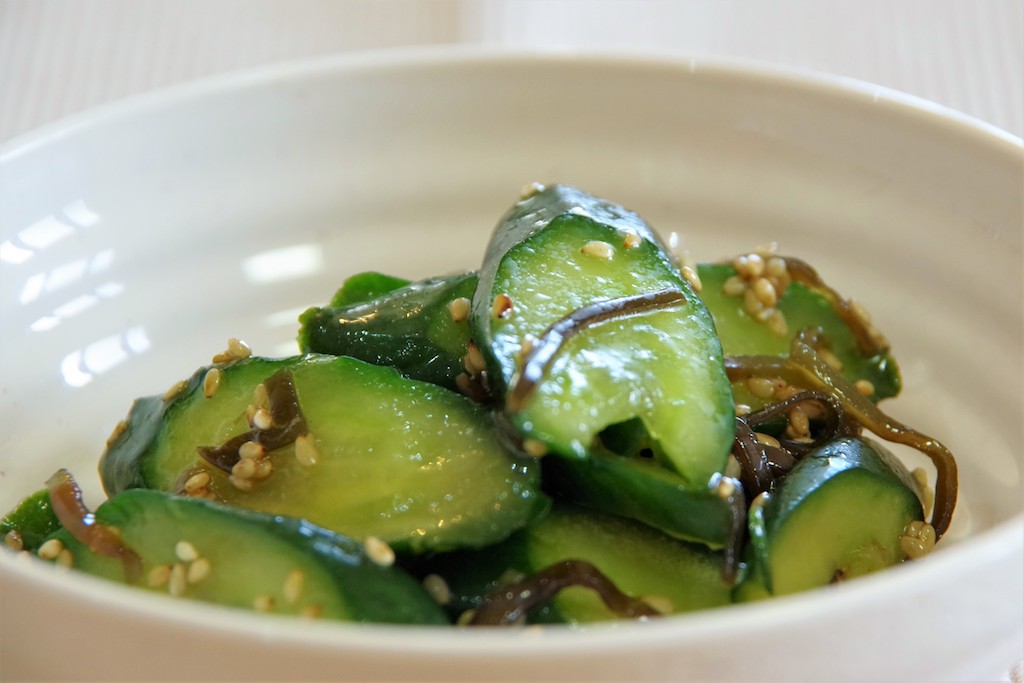
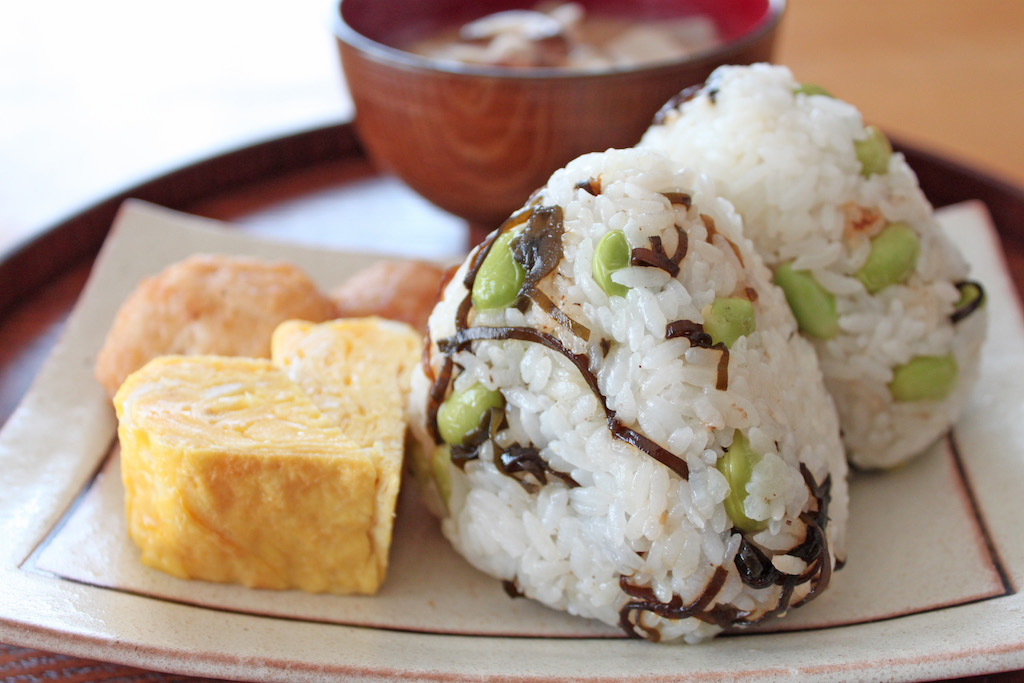
Tororo Kombu (Shredded Kelp)
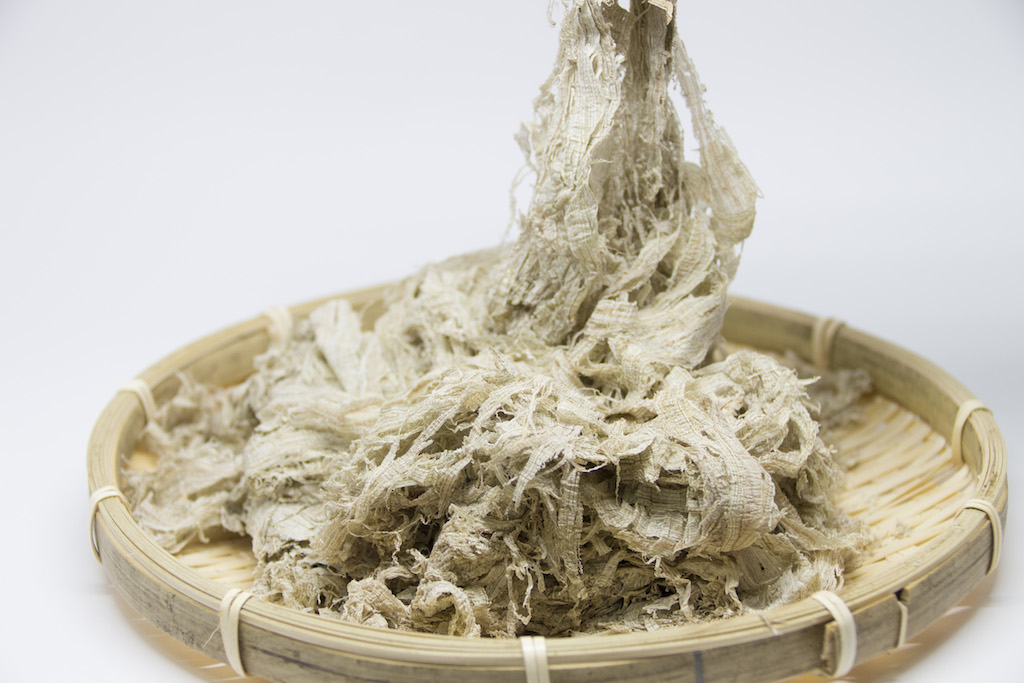
To make tororo kombu, dried kombu is soaked in vinegar and softened first, and it has to be harden into blocks. Then, the cross section of the blocks are cut into thin threads.
It’s used for making rice balls, or used as toppings for miso soup and noodle dishes such as ramen.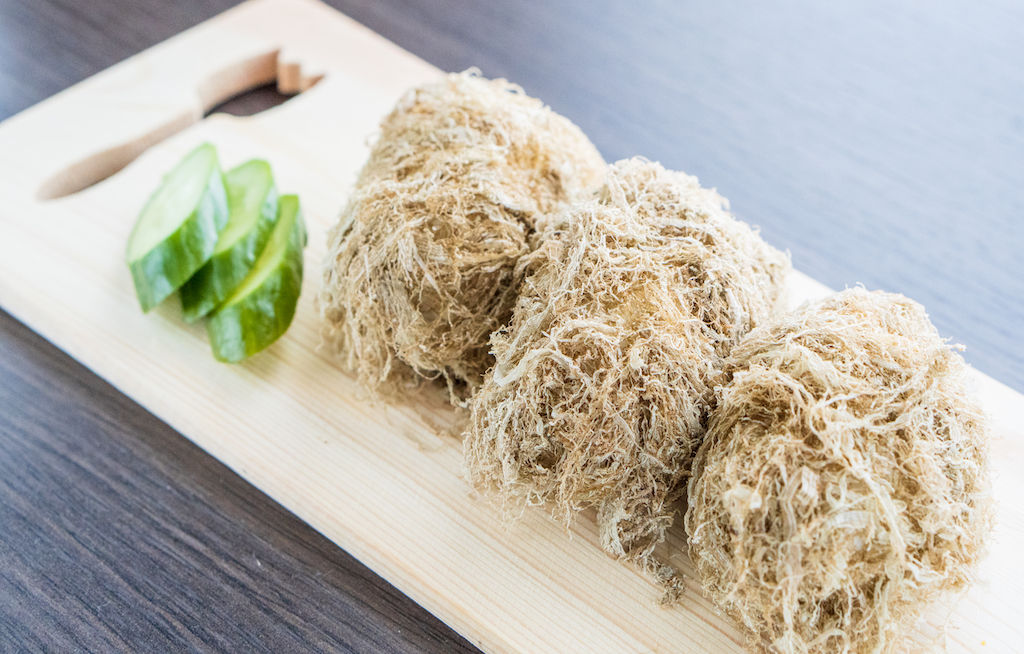
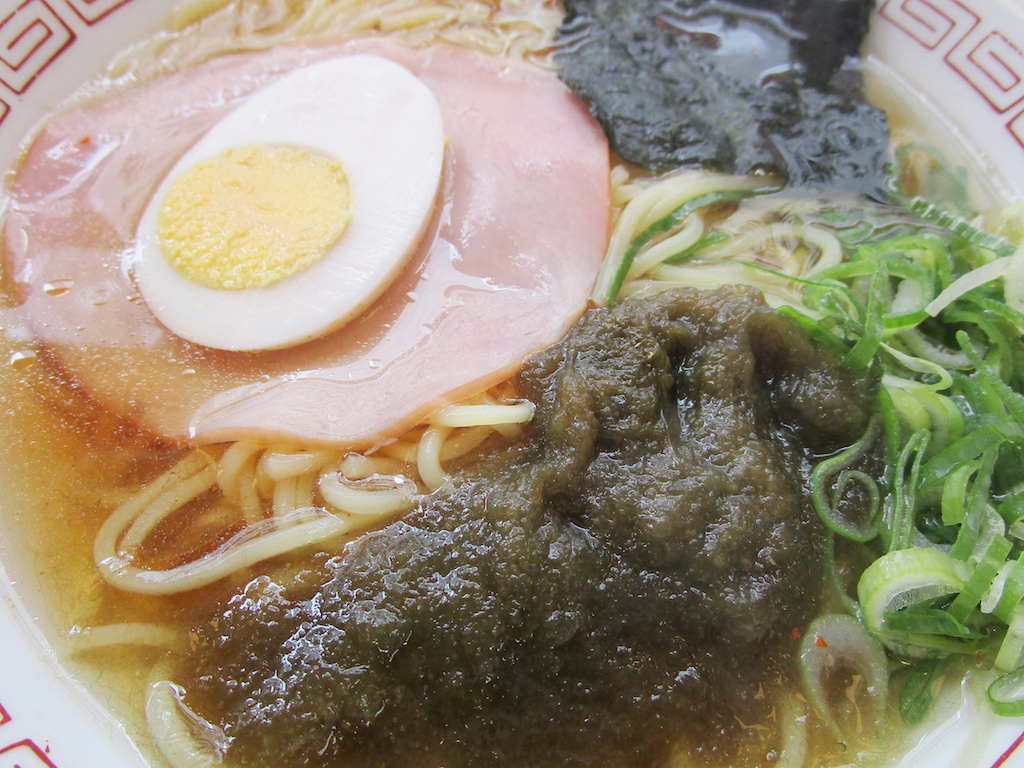
Shaved Kelp (Tororo-Kombu) Miso Soup Recipe
There is a similar item to tororo kombu which is called “Oboro kombu”. Oboro kombu has almost the same looks and taste as tororo kombu. But the difference is that oboro kombu is made by shredding the surface of a kombu by skilled craftsmen in the manufacturing process, while tororo kombu is made by shredding the cross section of kombu blocks with machines.
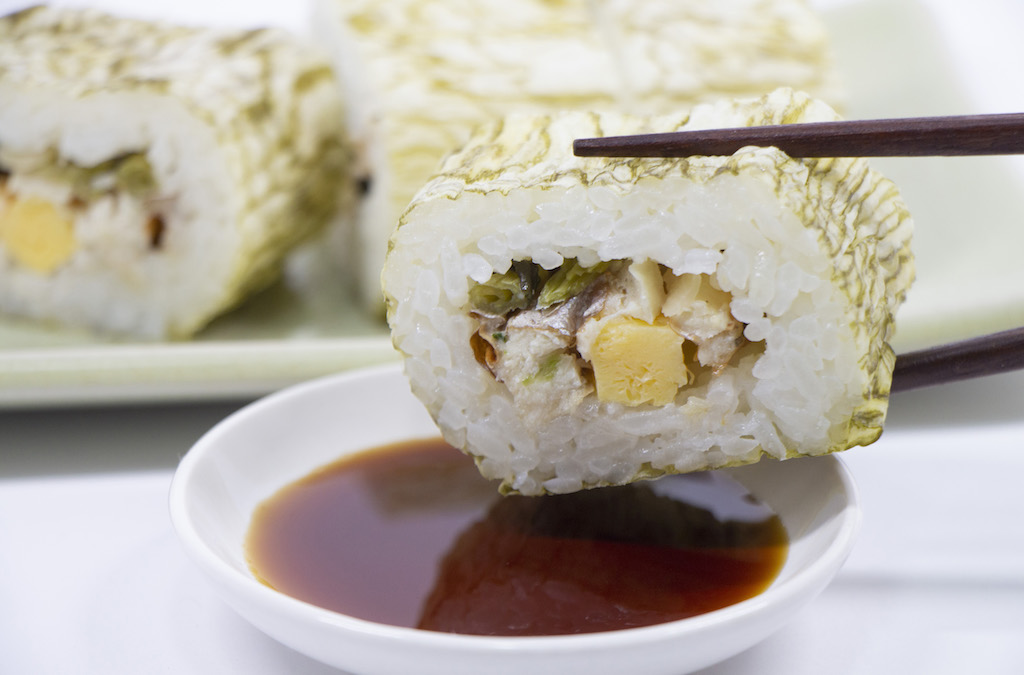 ▲Sushi Wrapped in Oboro Kombu
▲Sushi Wrapped in Oboro Kombu
Nutrition of Kombu (Dried)
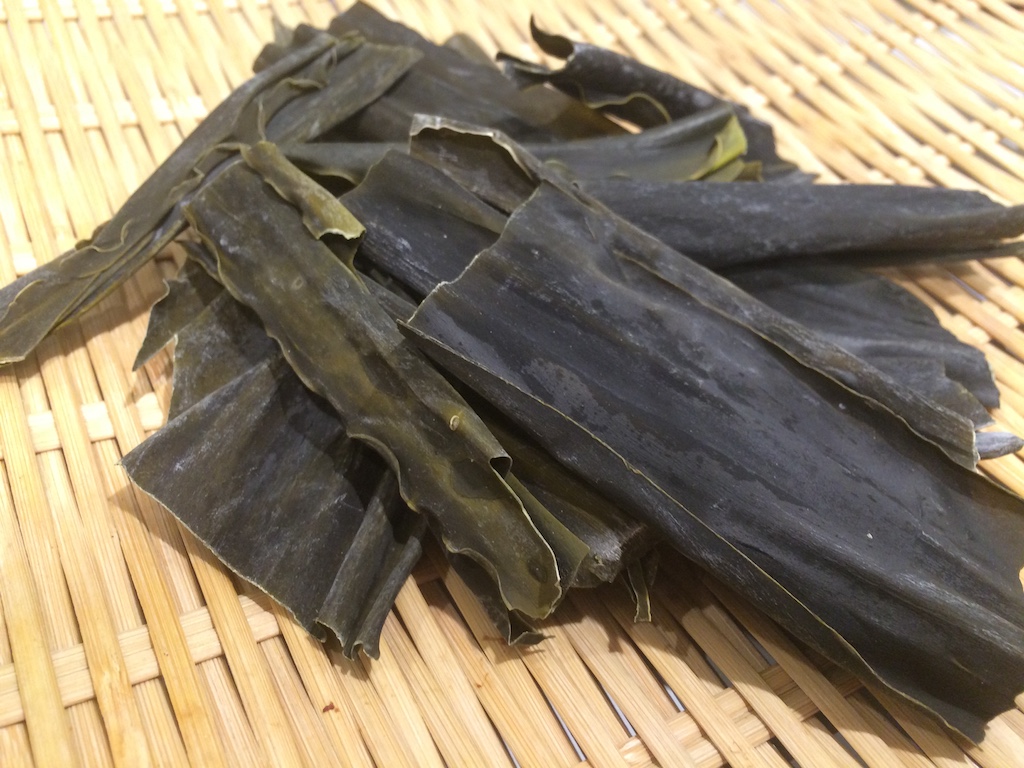
Below you will find the nutrition information for a 3.5 oz (100g) of dried kombu:
・Calories: 138kcal
・Water: 13.2g
・Total Carbohydrates: 56.5g
└Dietary Fiber: 31.4g
・Total Fat: 2.0g
・Protein: 8.0g
・Minerals
└Sodium: 2700mg
└Potassium: 5300mg
└Calcium: 760mg
└Magnesium: 540mg
└Phosphorus: 240mg
└Iron: 2.4mg
└Zinc: 1.0mg
・Vitamins
└Niacin: 2.0mg
└Vitamin C: 15mg
└Vitamin E: 1.0mg
└Other Vitamins: 1.8mg
What Are the Benefits of Eating Kombu?
Kombu has been very popular food as a health food nowadays since it contains abundant dietary fiber, iron, and calcium.
About 1/3 of kombu are dietary fiber (water-soluble dietary fiber), and you can expect that it can suppresses absorption of carbohydrates and fats, suppress the rise in cholesterol levels, and strengthen the immune system.
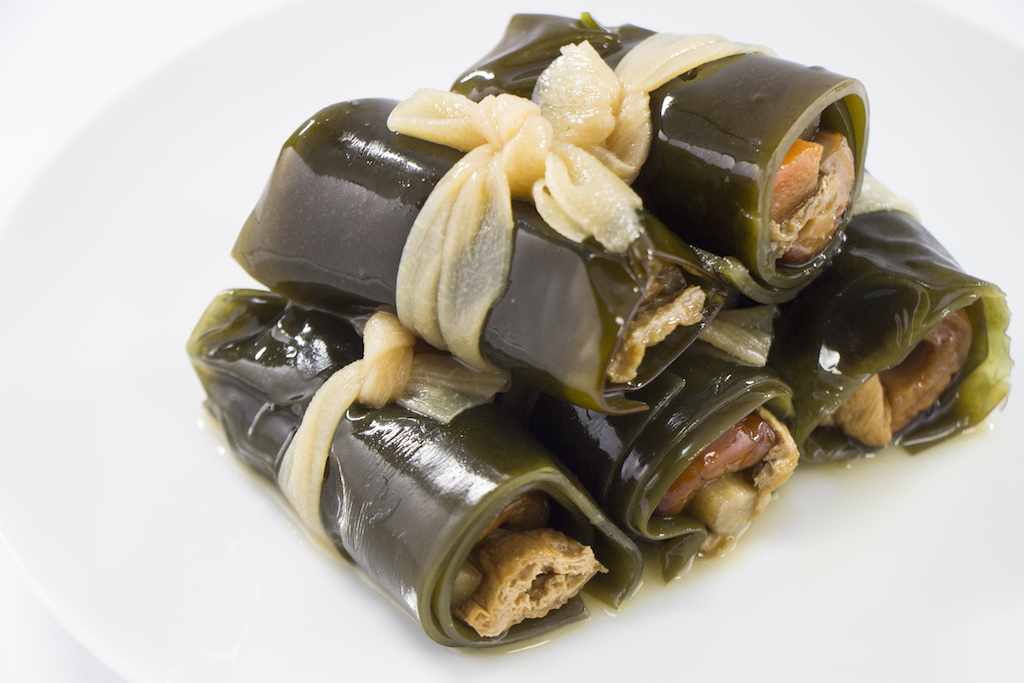
What Can I Use Instead of Kombu?
The 6 Best Kombu (Kelp) Substitutes

